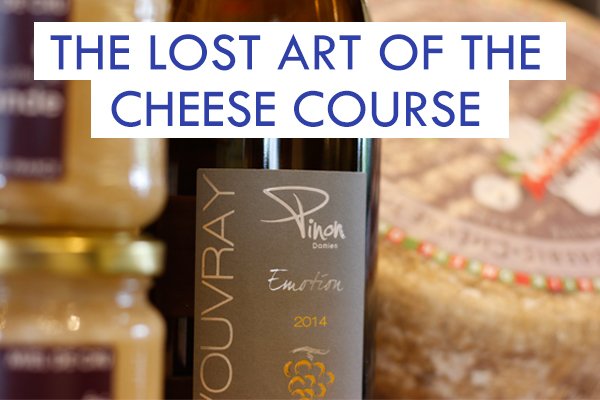France’s most famous gastronome, Jean Anthelme Brillat-Savarin, said this about the important role cheese plays in a meal: “Un dessert sans fromage est une belle à qui il manque un oeil.” Loosely translated, that means, “A dessert course with no cheese is like a beautiful woman with one eye.” According to the French sensibility, cheese is what brings the entire meal together.
A cheese course is, unfortunately, a strange concept to us today. We rarely have time to let the meal linger slowly through several courses anymore, nor do we always pay close attention to what we eat. However, a few carefully selected cheeses and curated wine pairings can be a beautiful way to prelude an evening, or to cleanse the palate in-between heavy courses.
Traditionally, the cheese course is served after the main course but before dessert. Sometimes a platter of various cheeses is served, and usually includes one of each different kind of milk—cow, sheep, and goat—along with a spread of preserves, honey, and perhaps nuts and dried fruit. Other times, one single, special cheese can be highlighted, perhaps with a wine pairing to really make it stand out.

This weekend, we challenge you to channel your inner French and bring back the lost art of the cheese course! Check out the France44 Cheese Shop’s weekend feature—Chebris, a goat and sheep’s milk cheese from the Basque country, topped with a dollop of delectable lavender honey.
One more thing to add to this match made in heaven: Domaine Pinon “Emotion” Vouvray—brand new to France44! One of our wine buyers, Dustin, visited Domaine Pinon last year in France and fell in love with not only the wines from this small family estate, but also with the elegant simplicity that infused their entire way of life. He picked out this particular wine for France44, a demi-sec Chenin Blanc, because he was so impressed with its balance and vivacity.
Chenin Blanc is one of those “magic grapes.” Because this particular varietal has both high natural acidity and high natural sugar content, it can be done in a multitude of different styles: sparkling, light and bone dry, rich and nutty, or in a dessert style… all depending on what the winemaker wants it to be. Vouvray, within the Loire Valley of northwest France, is Chenin Blanc’s most natural home. The limestone, chalk and clay soils there give it the vibrant, lively quality it is so famed for.
Cheese courses don’t have to be ornate: that same elegant simplicity of a tiny French winery can be brought to your own table with a few well-chosen items that, when you taste them together, seem like they could never be eaten apart from each other. The creaminess of the Chebris, the gentle sweetness of the honey and the bright acidity and fresh fruity sweetness of the Pinon Vouvray combine to make a wholly enjoyable culinary experience.
Here’s one last thing to whet your appetite: from September 1-3 if you mention this blog post at the register, we’ll knock a dollar off your bottle of Pinon “Emotion” Vouvray. Here’s to savoring the simple but elegant moments of life!

